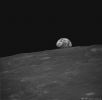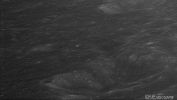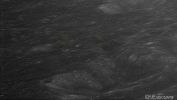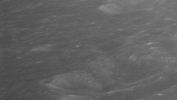It looks like you're using an Ad Blocker.
Please white-list or disable AboveTopSecret.com in your ad-blocking tool.
Thank you.
Some features of ATS will be disabled while you continue to use an ad-blocker.
share:
The research of image processing and deconvolution is a rapidly growing scientific field with broad range of
applications, one of which is astronomy.
I'm currently working on application of image deconvolution procedure to restore details from orbital photos of lunar surface from Apollo Program. It's an ongoing research but the results have been positive. I won't be going into technical details for this post other than uncompressed TIFF scans seem to produce the best restored details without compression artifacts. It's not hard to see that a 50Mb TIFF file would contain more information than a 0.5Mb JPG file even though they may look quite similar on surface.
One photo that I'd like to present to you is AS08-13-2329, also known as the first photo of Earthrise taken by a human from the Moon. It was taken during Apollo 8 mission, looking over the crater called Pasteur.

Link to original TIFF: archive.org...
One obvious thing from the scene that jumps out at the viewer is a Y-shaped object located middle-right of the photo. The origin and nature of the object is for another post but I can say that it does not exist in JPG of the photo found at history of NASA website but can be found in original scan versions located at archive.org and Gateway to Astronaut Photographs of Earth website.
Back to the subject. In the thumbnailed photo, I've drawn a square representing the 1920x1080 section of the restored photo I will be presenting in this thread. The original TIFF linked above has dimensions of 5262x5122.
The restored detail is so full of shapes that connect, intersect, interweave and in certain places join together to form elaborate structures that it would be impossible for anyone to draw these in pixel by pixel not to mention this represents about 1/10th of the scene which are also full of elaborate detail.
Visual definition seems to come from slight difference in brightness between the shapes and the edges. With slightly brighter pixels representing the structural material and slightly darker pixels representing ground space or the gap between objects.
What stands out to me besides the coherency are the elaborateness of some of these structures and the fact in certain places, near identically shaped structures are showing up next to each other two, three or even four at a time. The orientation or angle in which they exist side by side seems to vary as well from one set to another, as in one set has structures next to each other along horizontal alignment, other times in diagonal or near vertical alignment.

No Highlights

Some repeating structures highlighted
What's more, nearly the entire photo (of which above crop represents about 10%) seems to be full of objects that are more elaborate and coherent than just a circle, triangle or x on the surface. They seem to contain surface details conveying structures and connections with some semblance of coherence and artificiality.
For this to get any further a consultation with researchers specializing in the field of image processing and restoration is probably required. We need to verify the validity of the procedure and whether a restored scene like this could be based on some real underlying pixel data therefore representing what's actually on the surface with some confidence. Until then, have fun studying the image, as I will be. I will be highlighting more things that stand out to me and you are welcome to contribute as well.
I'm currently working on application of image deconvolution procedure to restore details from orbital photos of lunar surface from Apollo Program. It's an ongoing research but the results have been positive. I won't be going into technical details for this post other than uncompressed TIFF scans seem to produce the best restored details without compression artifacts. It's not hard to see that a 50Mb TIFF file would contain more information than a 0.5Mb JPG file even though they may look quite similar on surface.
One photo that I'd like to present to you is AS08-13-2329, also known as the first photo of Earthrise taken by a human from the Moon. It was taken during Apollo 8 mission, looking over the crater called Pasteur.

Link to original TIFF: archive.org...
One obvious thing from the scene that jumps out at the viewer is a Y-shaped object located middle-right of the photo. The origin and nature of the object is for another post but I can say that it does not exist in JPG of the photo found at history of NASA website but can be found in original scan versions located at archive.org and Gateway to Astronaut Photographs of Earth website.
Back to the subject. In the thumbnailed photo, I've drawn a square representing the 1920x1080 section of the restored photo I will be presenting in this thread. The original TIFF linked above has dimensions of 5262x5122.
The restored detail is so full of shapes that connect, intersect, interweave and in certain places join together to form elaborate structures that it would be impossible for anyone to draw these in pixel by pixel not to mention this represents about 1/10th of the scene which are also full of elaborate detail.
Visual definition seems to come from slight difference in brightness between the shapes and the edges. With slightly brighter pixels representing the structural material and slightly darker pixels representing ground space or the gap between objects.
What stands out to me besides the coherency are the elaborateness of some of these structures and the fact in certain places, near identically shaped structures are showing up next to each other two, three or even four at a time. The orientation or angle in which they exist side by side seems to vary as well from one set to another, as in one set has structures next to each other along horizontal alignment, other times in diagonal or near vertical alignment.

No Highlights

Some repeating structures highlighted
What's more, nearly the entire photo (of which above crop represents about 10%) seems to be full of objects that are more elaborate and coherent than just a circle, triangle or x on the surface. They seem to contain surface details conveying structures and connections with some semblance of coherence and artificiality.
For this to get any further a consultation with researchers specializing in the field of image processing and restoration is probably required. We need to verify the validity of the procedure and whether a restored scene like this could be based on some real underlying pixel data therefore representing what's actually on the surface with some confidence. Until then, have fun studying the image, as I will be. I will be highlighting more things that stand out to me and you are welcome to contribute as well.
i see none of the things you are talking about so idk.. I do believe there is a base and other things going on, on the moon.. There is no reason in
the world we should be worried about mars when we could be on the moon building a home base that is outside of earth so that its easier for us to
learn more about space.. I think its retard that we even build a space station and not a moon base so to me it makes no sense that there has to be
something on the moon whether its ours or not.
not seeing anything myself,both pics look same to me with no highlights
I'll tell you now that a great deal of people are going to attempt to explain to you that nothing in that picture is out of the ordinary. They'll
most likely be right.
I see what you think looks "artificial", but in all honesty there are a thousand things (lines,shapes) that look exactly the same in this picture.
I see what you think looks "artificial", but in all honesty there are a thousand things (lines,shapes) that look exactly the same in this picture.
I can easily see what he's trying to show us.

While we realy are looking a pixelated picture (people will mention this ) its quite obvious there are repeating patterns that do not look like compression artifacts.
What we realy need are some of the GOOD photo's taken by the hubble telescope, and YES they did take GOOD shots of the moon using hubble, dont let anyone tell you they didn't.

While we realy are looking a pixelated picture (people will mention this ) its quite obvious there are repeating patterns that do not look like compression artifacts.
What we realy need are some of the GOOD photo's taken by the hubble telescope, and YES they did take GOOD shots of the moon using hubble, dont let anyone tell you they didn't.
The following is my opinion as a member participating in this discussion.
First of all, why make a new thread when you had another one about this photo?
Second, could you please post the same area of the original, without any processing?
I ask because I saw the original TIFF image (as you know) and the repeating patterns (although I don't remember if they were the same as the ones you point out here) are more noticeable without processing.
Some of the patterns pointed out on this thread look like artefacts of some kind of processing.
As an ATS Staff Member, I will not moderate in threads such as this where I have participated as a member.
The following is my opinion as a member participating in this discussion.
Originally posted by VoidHawk
While we realy are looking a pixelated picture (people will mention this ) its quite obvious there are repeating patterns that do not look like compression artifacts.
No, they are not compression artefacts, but they can be exagerated (or even created) by any process used, so we need to look at the original image.
PS: just posting a link is not enough, as most people are lazy and don't click the links.
As an ATS Staff Member, I will not moderate in threads such as this where I have participated as a member.
BTW highlights are in yellowish color. Try opening both images in separate tabs and going back and forth. I also see lots of tubes or pipelines all
over the place, interweaving other tubes. That seems to be one common feature. I have no idea what these things are either. I am looking for clues but
so for nothing much other than general ambiance that this isn't natural because there are repeating structures, lines that connect to one another,
etc.
Y'know, I've heard a lot of anecdotal stuff concerning alien structures on the moon, but I aint seen one picture to date that is anything other than
fanciful wishful thinking.
Don't get me wrong, I'm very open minded to this particular subject, to be truthful....I want to believe...but somebody....please.....for chrissakes show me a picture of an actual structure on the moon !!!
Don't get me wrong, I'm very open minded to this particular subject, to be truthful....I want to believe...but somebody....please.....for chrissakes show me a picture of an actual structure on the moon !!!
edit on 10-4-2013 by seabhac-rua because: (no reason given)
Here is original crop of same area.

That other thread is about the mechanics and methods of the procedure. This is direct alien thread questioning could these structures be evidence of alien civilization on the Moon which should be of interest for this forum.

That other thread is about the mechanics and methods of the procedure. This is direct alien thread questioning could these structures be evidence of alien civilization on the Moon which should be of interest for this forum.
edit on 10-4-2013 by PINGi14 because: (no reason given)
rabbits and other shapes in clouds.
You are seeing what you want to see
You are seeing what you want to see
reply to post by VoidHawk
Hubble was never designed to take images of the moon....the moon is too close and moves too fast for it to take a really good shot, the reason it takes such clear shots of distant galaxies is because it can sit and point at them for days on end, Hubble's power lies in it's ability to collect light not in it's magnification capabilities.
Who told you "they" took "good" shots of the moon that they aren't releasing?
What we realy need are some of the GOOD photo's taken by the hubble telescope, and YES they did take GOOD shots of the moon using hubble, dont let anyone tell you they didn't.
Hubble was never designed to take images of the moon....the moon is too close and moves too fast for it to take a really good shot, the reason it takes such clear shots of distant galaxies is because it can sit and point at them for days on end, Hubble's power lies in it's ability to collect light not in it's magnification capabilities.
Who told you "they" took "good" shots of the moon that they aren't releasing?
ok see the yellow highlights now but flicking between the 2 pics i still see nothing,think ur going to have to highlight the difference cause i just
don,t see it.
Originally posted by Argyll
Who told you "they" took "good" shots of the moon that they aren't releasing?
Who told you they didn't?
I remember in another thread our so called ats experts appeared and shot a guy down for asking why they dont use hubble to look at the moon, they stated much the same reason as you. A few days later I was watching a documentary and there it was, a picture of the moon taken by hubble!
I'll have to dig through and see if I can find which docu it was, I'll post it when I find it.
Originally posted by PINGi14
Here is original crop of same area.

That other thread is about the mechanics and methods of the procedure. This is direct alien thread questioning could these structures be evidence of alien civilization on the Moon which should be of interest for this forum.edit on 10-4-2013 by PINGi14 because: (no reason given)
IF...I could see the structures you claim. Then, I'd be in a better position to discuss if they are indeed Alien artifacts on the moon.
I don't toss out completely, there *may* be such on the moon. I just don't see any evidence in the pics you posted.
Des
edit on 10-4-2013 by Destinyone because: (no reason given)
reply to post by VoidHawk
They have taken shots of the moon with Hubble, I never said they hadn't......you just seemed to be insinuating that it's capable of getting a really "good" shot and that it was being withheld.
They have taken shots of the moon with Hubble, I never said they hadn't......you just seemed to be insinuating that it's capable of getting a really "good" shot and that it was being withheld.
The following is my opinion as a member participating in this discussion.
Originally posted by PINGi14
Here is original crop of same area.
Thanks.
This way it's easier to compare them.
As I said in the other thread, all those patterns look like someone used the clone tool on that photo.
As an ATS Staff Member, I will not moderate in threads such as this where I have participated as a member.
new topics
-
Hey, people! Where did all the new topics go?
Social Issues and Civil Unrest: 45 minutes ago -
Federal law trumps state and local law every time
Social Issues and Civil Unrest: 11 hours ago
top topics
-
Federal law trumps state and local law every time
Social Issues and Civil Unrest: 11 hours ago, 16 flags -
Hey, people! Where did all the new topics go?
Social Issues and Civil Unrest: 45 minutes ago, 3 flags
active topics
-
-@TH3WH17ERABB17- -Q- ---TIME TO SHOW THE WORLD--- -Part- --44--
Dissecting Disinformation • 3381 • : Crazierfox -
Hey, people! Where did all the new topics go?
Social Issues and Civil Unrest • 3 • : KnowItAllKnowNothin -
Joe Biden Dabs Away Tears at Farewell White House Dinner
Politicians & People • 25 • : RazorV66 -
A Mysterious Orb filmed over NYC by local news
Aliens and UFOs • 26 • : DaydreamerX -
Federal law trumps state and local law every time
Social Issues and Civil Unrest • 29 • : theatreboy -
I thought Trump was the existential threat?
World War Three • 78 • : fringeofthefringe -
Well, here we go red lines crossed Biden gives the go ahead to use long range missiles
World War Three • 390 • : Freeborn -
Anyone like the Scorpions?
Music • 21 • : belkide -
Comcast dumping MSNBC
Mainstream News • 36 • : Kaiju666 -
Post A Funny (T&C Friendly) Pic Part IV: The LOL awakens!
General Chit Chat • 7831 • : DBCowboy
